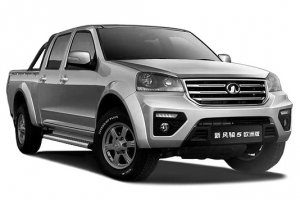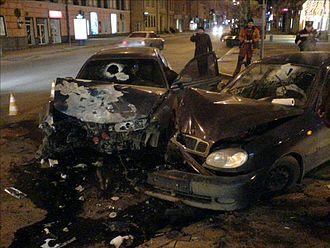Seat belts. When do they harm rather than protect?
 In Poland, more than 90% of drivers and passengers wear seat belts. However, they may not perform their function if we do not secure them properly and take the appropriate position.
In Poland, more than 90% of drivers and passengers wear seat belts. However, they may not perform their function if we do not secure them properly and take the appropriate position.
The driver should adjust the head restraint, the height of the seat and its distance from the steering wheel, and keep his feet so that he can freely control the pedals. How are the passengers? During long journeys, they often change position to be more comfortable, but not necessarily safe. Elevating your legs can cause the belts to fail under heavy braking.
Correct driving position
When choosing the right driving position, you need to remember the height of the seat, the distance from the steering wheel and the position of the head restraints. – The driver must adjust the seat high enough to have a clear view of the car's hood and the ground four meters in front of the car. A setting that is too low limits visibility, while a setting that is too high increases the risk of injury in the event of an accident, says Zbigniew Veseli, director of the Renault Driving School.
Depress the clutch pedal before adjusting the distance between the seat and the steering wheel. This is the farthest point we have to reach while moving. Then the seat back should be folded back so that the driver, without lifting his back from the seat back, reaches the steering wheel with his wrist until 12.00 (provided that the steering wheel reflects the clock face). “Too close a seat will make it impossible to freely and smoothly maneuver the steering wheel, and if you are too far away, dynamic maneuvers may not be possible, and pedaling can be very difficult,” say instructors from the Renault Driving School.
An important element of correct posture is also the position of the headrest. Its center should be at the level of the back of the head. The headrest is the only protection for the cervical spine in the event of an accident. Only after the driver's seat is set correctly do we adjust other settings such as the seat belts.
Correct passenger position
Passengers must also assume a suitable position in their seat. The passenger in the front seat must first move the seat back so that their feet do not touch the dashboard. It is important that the passenger raises the seat while sleeping while driving and that the seat does not fall into a horizontal position. This position would be very dangerous in the event of a collision and sudden braking. – When driving, the passenger should not keep their feet too close to the dashboard, and should not lift or twist them. In the event of sudden braking or a collision, the airbag may open and the legs may jump out, and the passenger will be injured, say the coaches of the Renault Driving School. In addition, the seat belts may not work properly due to improper seat belt position, especially on the lap. In this case, the belt must go below the stomach, and raised legs can cause the belt to slide up, the trainers add.
Belt operation
The purpose of the straps is to absorb the brunt of the impact and hold the body in place. The belts absorb heavy impacts and help avoid bumps against the dashboard, steering wheel or, in the case of rear seat passengers, the front seats. Using seat belts with an airbag reduces the risk of death by 63% and significantly prevents serious injury. Wearing a seat belt alone reduces the death rate by almost half.
Can you fasten your seat belt?
Many drivers and passengers automatically fasten their seat belts without thinking about whether they are doing it correctly. How should the belt lie in order to perform its function correctly? Its horizontal part, the so-called hip part, must be lower than the passenger's stomach. This arrangement of the belt will protect against internal damage in the event of an accident. The shoulder part, in turn, should run diagonally across the entire body. A seat belt fastened in this way is sufficient to hold the body in place not only during braking, but also in a collision or rollover.

